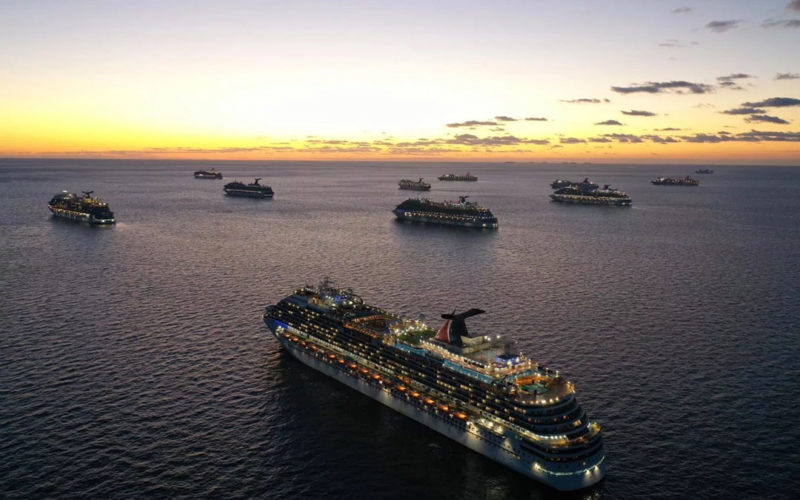
Though the COVID-19 pandemic brought passenger travel to a halt for all major oceangoing cruise lines, many ships were still sailing an estimated 15,000 to 20,000 crewmembers to their home countries in July, according to the Cruise Lines International Association (CLIA).
“What cruise lines have been doing is taking the ships around the world to repatriate crewmembers directly by (sea),” said Donnie Brown, vice president of maritime policy for CLIA. “It has been a Herculean effort.”
Crews are incredibly multinational. In the case of Carnival Corp., for example, crewmembers come from over 110 countries. Cruise lines had to navigate widely varied and evolving border control and health policy restrictions for each country, including those that weren’t allowing their own nationals to re-enter — sometimes specifically because they had been on a cruise ship.
The paperwork to receive approval from the Centers for Disease Control and Prevention (CDC) for a U.S. national crewmember to return home on a commercial airline was so daunting that no CLIA member company has used that option, Brown said. Instead they have turned to charter flights to help complete trips home, with hundreds of planes operating like buses to stop and let crew off along the way. Charters also involve a mountain of paperwork, however, and are prone to last-minute weather cancellations that are disheartening to crewmembers.
Carnival started with 80,000 crewmembers to repatriate at the beginning of the pandemic and had whittled that down to about 1,600 by early August, according to Roger Frizzell, senior vice president and chief communications officer. That $100 million effort required 49 cruise ships covering more than 400,000 nautical miles, not to mention all the charter flights and the 200 land-based personnel coordinating the travel.
Worldwide, most of the 280 CLIA member cruise ships are on “warm layup,” with minimal crew keeping the vessels running — the most economical option if passenger operations resume within a year of the shutdown. In the United States, the CDC has a no-sail order in place for cruise ships until Sept. 30, and CLIA announced in early August that it had voluntarily extended the suspension of U.S. oceangoing cruise operations until Oct. 31.
The difficulties with crew repatriation aren’t exclusive to the cruise industry. Cargo operators are feeling it too, said Sean Kline, director of maritime affairs for the Chamber of Shipping of America.
“Ships are moving and crews are working, but they aren’t on their usual staffing rotation,” he said. “When they pull into port, local and international governments have lockdowns in place that don’t allow for crew changes.”
Before the pandemic, there were about 100,000 crew changes per month to comply with international regulations governing seafarer welfare. As COVID-19 spread, however, flag states petitioned to keep trade flowing with existing crews. At the end of July, the International Chamber of Shipping estimated that 250,000 seafarers around the world were still awaiting repatriation.
“On our latest calculation, we estimate that a quarter of a million seafarers are trapped aboard ships, unable to be repatriated due to the travel restrictions being imposed by governments around the world,” said Stuart Neil, communications director for the chamber. “There are, therefore, a further quarter of a million seafarers waiting to replace them, some not on contract, which means that we are around half a million seafarers being impacted.”

